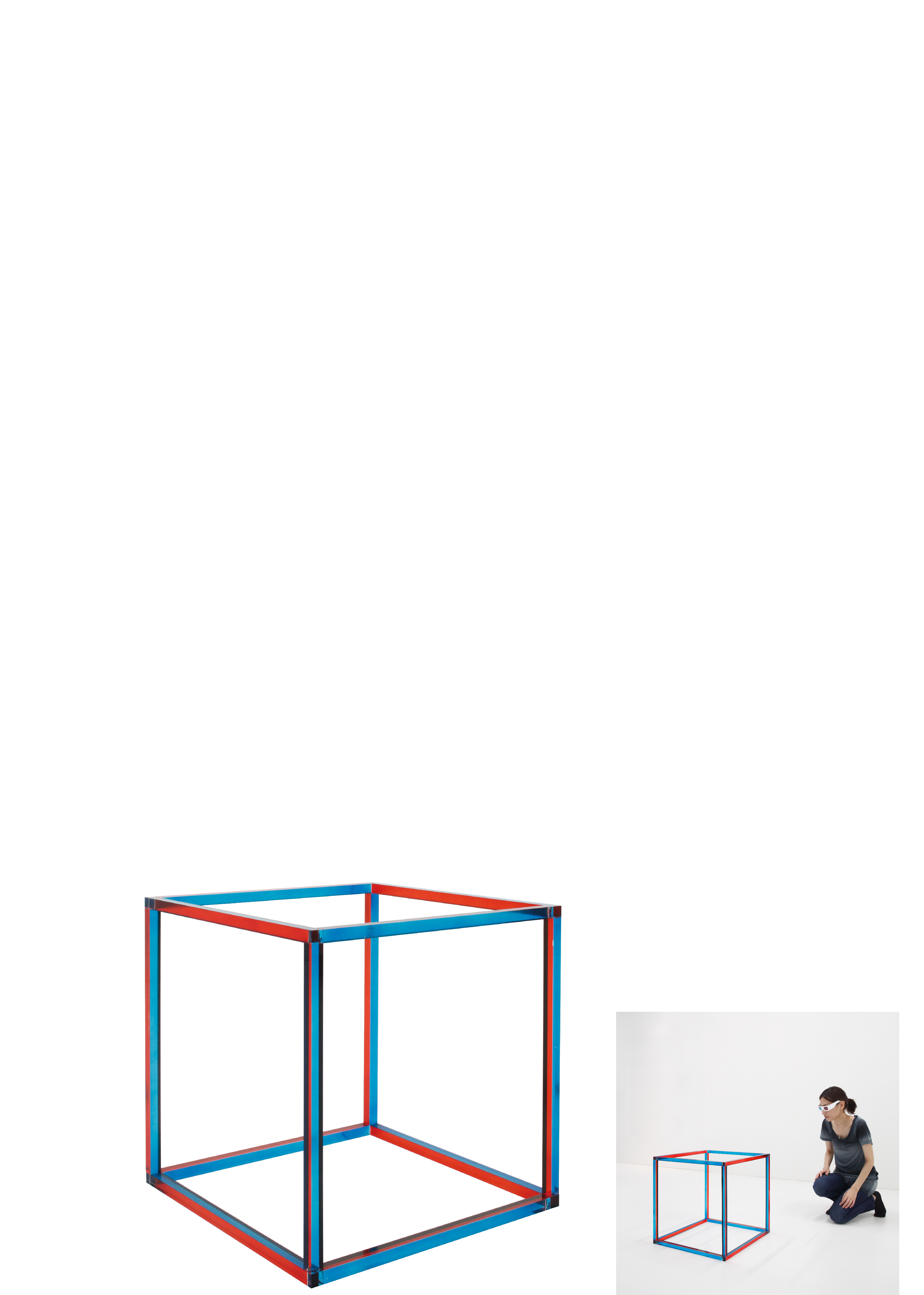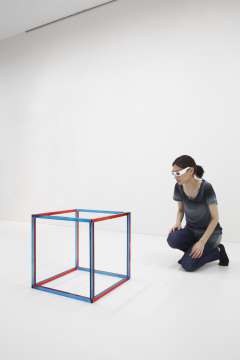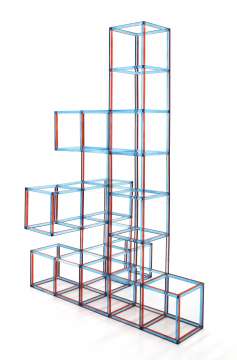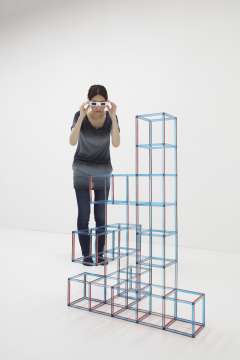
ヴェルナー・ヘルツォーク監督のドキュメンタリー映画「世界最古の洞窟壁画 3D 忘れられた夢の記憶」を見て以来、3Dが面白いと思うようになった。昨今の3D表現の方式からすると古くさいかもしれないが、アナグリフという方式を用いると簡単に一枚の絵に奥行きを持たせることができる。アナグリフとは誰もが一度は目にしたことがあるであろう、赤と青のメガネを使った3Dの表現技法のひとつである。
ものを見ているときには、それぞれの目に映る像に微妙なズレ(視差)が生じているのだが、それを普段意識することはないし、意識してもひとつのものが2つに見えたりはしない。その2つの像の微妙なズレを計算して、私たちの脳は物体の奥行きをかなり正確に捉えることができる。その仕組みを逆手にとって、赤と青のフィルターを通して右目と左目に映る像を一旦分離させ、脳でもう一度合成させる。こうすることで、平面の中に奥行きを感じることができるようになる。これが平面における立体視の仕組みである。
今回「平面における奥行き知覚」のような、そこにないのに感じられる「立体における何らかの新たな知覚」を導き出すため、立体を立体視するというアイデアを思いついた。その新たな知覚を確かめるために立体の立体視、もう少し具体的に言うと、彫刻のアナグリフを作成してみた。
彫刻は回り込んで見ることができる。彫刻は視点によってさまざまに見え方が変化する。彫刻を見ることは、運動すなわち時間を伴う行為である。
はたして、立体の立体視によって4次元のオブジェを見ることができるのだろうか。
Having watched “Cave of Forgotten Dreams,” a 3-D documentary film by director Werner Herzog, I found myself interested in 3-D technology. Although out-fashioned compared with present day 3-D technologies, anaglyph is a handy way to give depth perception. Perhaps, everyone has seen anaglyph grasses with red and blue lenses. Our visual perception entails a slight gap between both eyes (called “parallax”). We are usually not aware of it, and even if we consciously bear it in our mind, it will not cause duplicated images. Our brain is capable of calculating the slight gap between two images in order to work out depth with a high accuracy. Therefore, we can replicate 3-D experience on a two dimensional image by separating the image on two eyes through red and blue filters, which are combined again in the brain.
The “depth perception on the two- dimensional image” inspired me to conceive an idea to create “a somewhat new perception on the three-dimensional object.” The idea developed into application 3-D viewing to the three dimensional object and was embodied as anaglyph sculptures. The sculpture can be seen from any angles and changes its appearance with different perspectives. Viewing a sculpture involves motion and is a time-related experience.
A question arises here. Can 3-D viewing on the three-dimensional object allow us to see the four dimensional object?
High-resolution images
| Title | DownloadDL | PhotographerPhoto | Courtesy |
|---|---|---|---|
| Cubic Cube (Cube) | Fig.1303 | Keizo Kioku | Kurumaya Museum of Art |
| Cubic Cube (Cube) | Fig.1304 | Keizo Kioku | Kurumaya Museum of Art |
| Cubic Cube (Structure) | Fig.1128 | Keizo Kioku | Kurumaya Museum of Art |
| Cubic Cube (Structure) | Fig.1305 | Keizo Kioku | Kurumaya Museum of Art |
» Test Pattern « Cyclops



